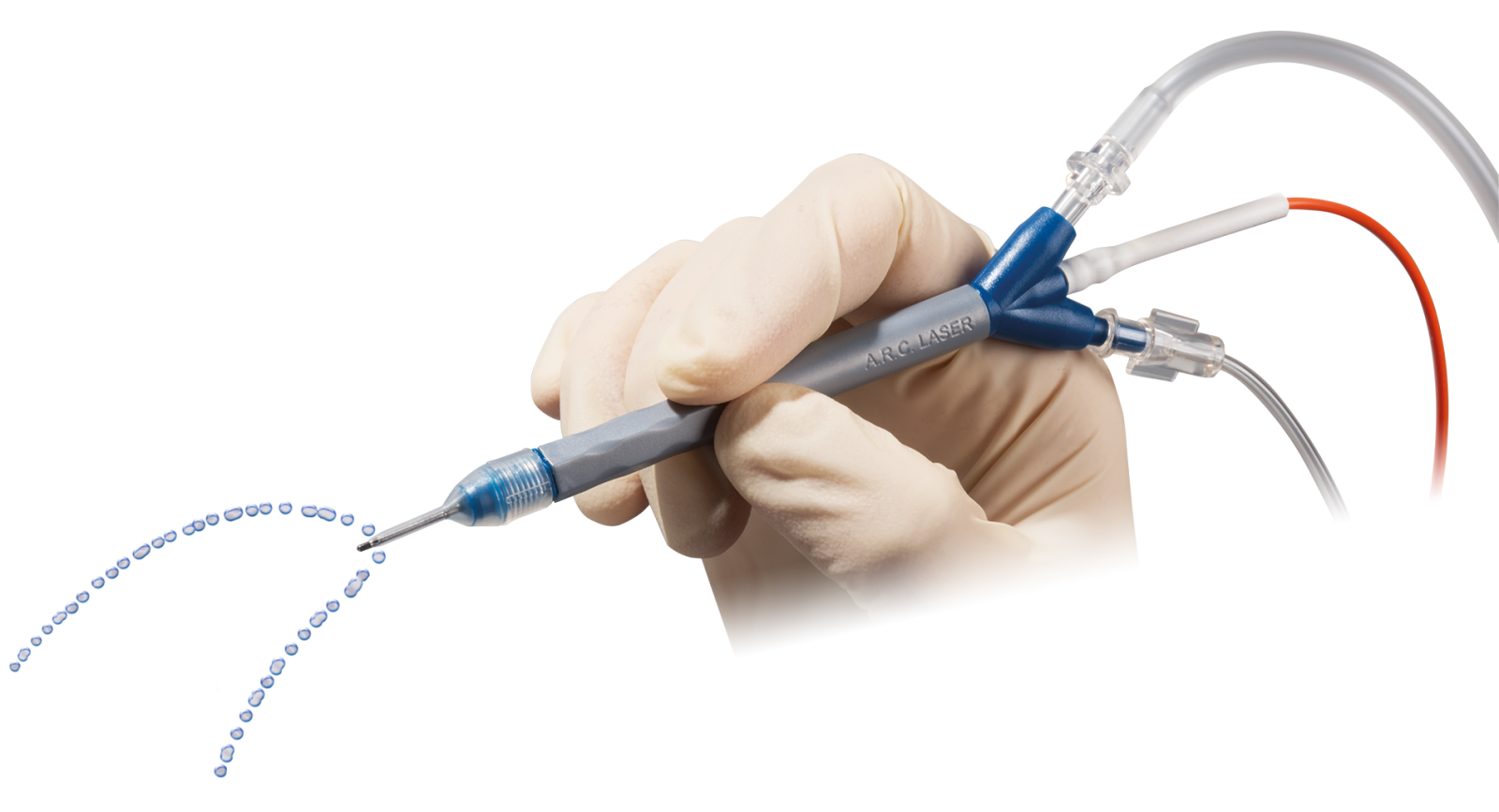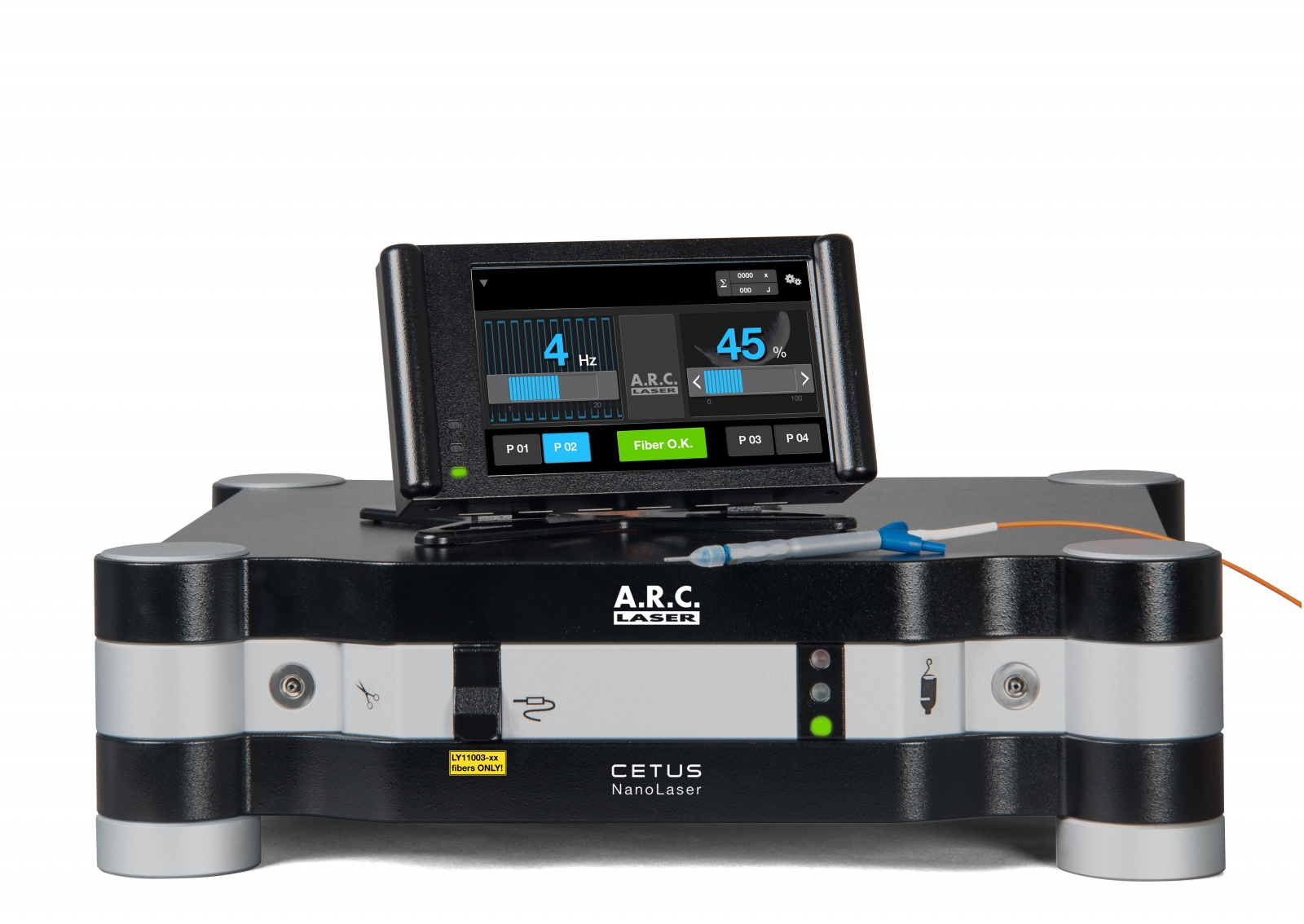Nanosecond laser
Cataract surgery with a Nanosecond cataract Laser
The difference between conventional cataract surgery and cataract surgery with a Nanosecond Laser is that the Nanosecond Laser completely dissolves and aspirates the opacified lens.
The Nanosecond Laser is the only real cataract laser available on the market.
Dr Vryghem has recently bought a new laser which allows him to remove the opacified crystalline lens (cataract) with laser beams. This Nanosecond cataract laser is the first laser available in Belgium and will be the only laser available until 2017.

What are the advantages:
- The operation is performed through laser impulses: there are no mechanically moving parts, no ultrasounds, no sharp angles
- 100% photo fragmentation
- The low laser impulse intensity prevents the generation of heat, there is no risk of thermal damage to the tissue
- No risk of capsule rupture
- Most delicate cataract surgery technique
- The materiel used is single-use (nanosecond laser coaxial handpiece): maximized hygiene, minimal risk of infection.
-
Most safe cataract surgery technique
1.8 to 2.2 mm micro incision
Faster visual recovery - Most predictable cataract surgery technique
What are the disadvantages
- Procedure time is a bit longer (but the procedure is safer)
- The Nanosecond Laser is less efficient in dens cataracts
- The costs for Nanosecond Laser cataract surgery are higher than the costs for conventional cataract surgery.
- The costs still remain less than Femtocataract surgery.
-
The additional cost covers the real costs for the disposables and a contribution for the investment in the equipment.

What are the advantages of Nanosecond Laser cataract surgery over Femtosecond cataract surgery:
- Where in Femtocataract surgery the tissue is merely separated by means of the laser, in Nanosecond Laser cataract surgery the tissue is completely dissolved and aspired.
- The Femtosecond Laser makes incisions which generates a potential risk of leakage.
- The rhexis made by means of the Femtosecond Laser is less stable than the manual rhexis which is made in the Nanosecond Laser technique.
- When fragmenting the opacified lens, the Femtosecond Laser produces gass which causes a risk of capsule rupture.
- The Nanosecond Laser technique excludes the risk of capsule rupture.
- After destruction of the opacified lens, the Nanosecond Laser polishes the capsule and excludes the postoperative risk of developing secondary cataract. (risk of 1/3 in conventional
The process of cataract surgery with a Nanosecond Laser
- 1.8-2.2 mm incision
- Capsulorhexis: opening of the anterior capsule, an eyelid-spreader holds you from blinking.
- Injection of viscoelastic material
- The opacified lens is destroyed and aspired by means of a Nanosecond Laser. The capsule is polished.
- Insertion of a foldable lens
- Implant is in the bag. Incision without sutures.
- cataract surgery.
If you want more information, or would like to make an appointment:
Contact us or call 0032 (0)2 741 69 99